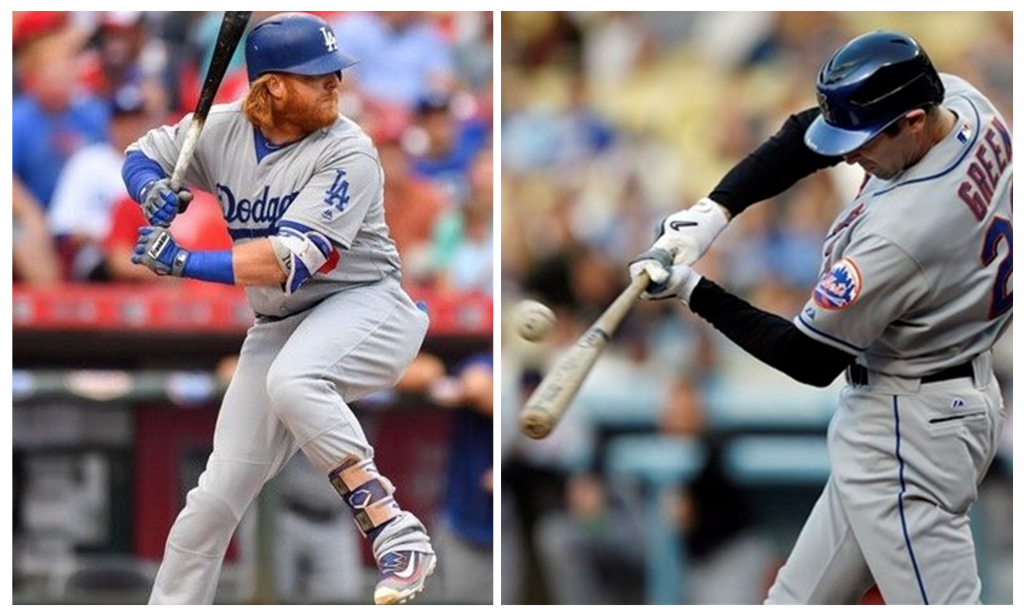
Hitting an MLB fastball requires the application of a huge amount of energy in the blink of an eye, roughly 130 ms to be exact. That’s about a 1/8th of a second. Only through a coordinated series of contractions involving not only muscles but joints and connective tissue traveling up the kinetic chain into the hands and ultimately the bat can we achieve adequate bat speed and quickness to hit a baseball traveling at speeds north of 90 mph. This article is meant to familiarize you with the 2 distinct phases (stride and swing) and 15 positions in baseball hitting and baseball swing mechanics that we review when analyzing video.
Baseball Hitting Mechanics – Stride and Swing Phases
The Stride Phase (1 – 10) begins at set-up and ends when the hitter commits to the pitch (heel plant). The Swing Phase (1 – 5) begins as the front leg blocks at heel plant and the body begins to accelerate its rotation against a firm front side, ultimately ending at contact.
Stride Phase
-
-
- Stride Phase: Setup / Stance
- Stride Phase: Excessive Negative Weight Shift
- Stride Phase: Poor Rear Hip Load
- Stride Phase: Inability to Maintain COM
- Stride Phase: Lack of Linear Momentum
- Stride Phase: Lack of Independent Hands
- Stride Phase: High Elbow
- Stride Phase: Losing the Barrel
- Stride Phase: Stride Length
- Stride Phase: Lack of Lower Half Stability
-
Swing Phase
-
-
- Swing Phase: Front Knee Angle
- Swing Phase: Inefficient Lead Leg Block
- Swing Phase: Poor Axis of Rotation
- Swing Phase: One-Piece Swing
- Swing Phase: Push
-
Here we go with the Stride Phase, followed by the Swing Phase further below…
Baseball Swing Mechanics – Stride Phase (linear)
1. Stride Phase: Set-Up / Stance
Different strokes for different folks here. Because the set-up is a “pre-swing” position, a hitter’s stance at set-up can be unique to each individual without affecting the ability to adjust to pitches in various locations. Stances can range from narrow to wide as well as open, closed, or parallel.
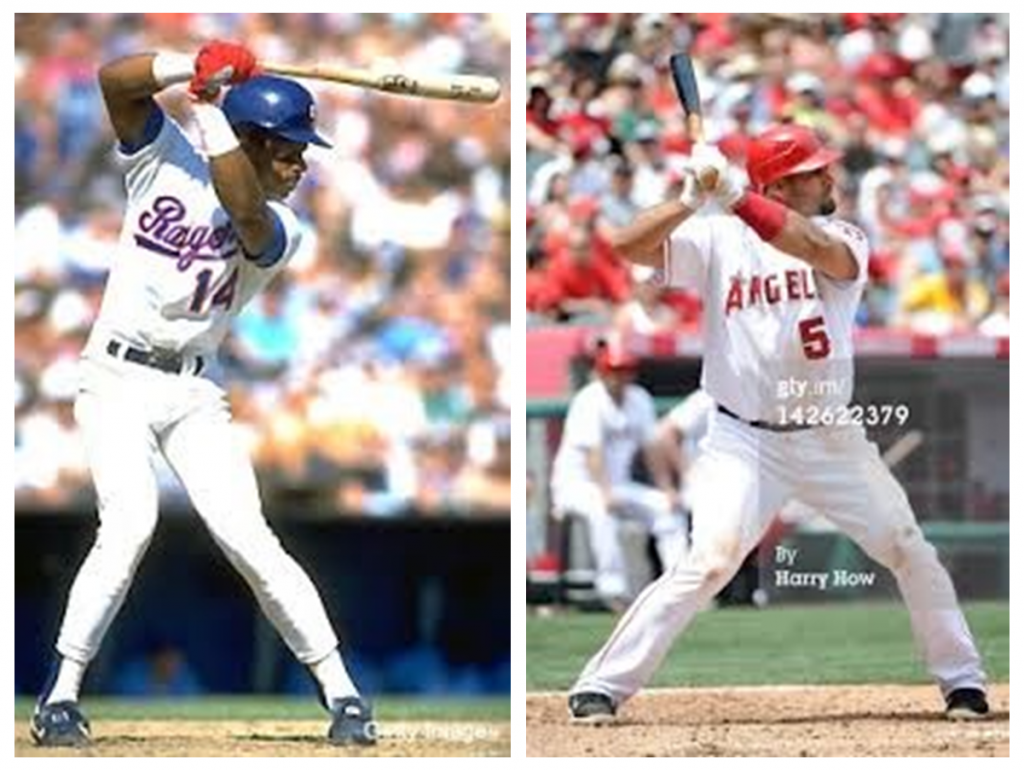
2. Stride Phase: Excessive Negative Weight Shift
While different players have different styles, they all must position their weight on the inside of the feet in order to eventually load around the rear hip and get ready to move forward.
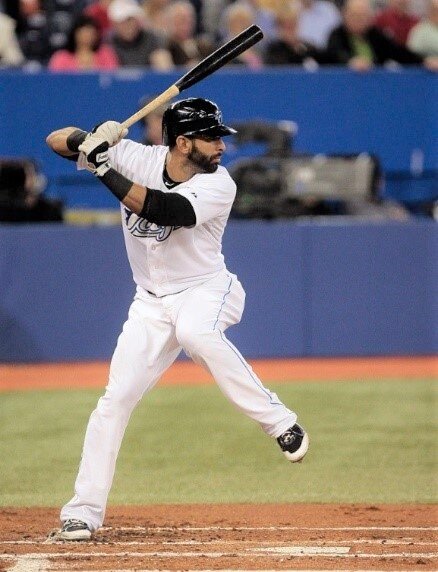
Excessive negative weight shift occurs any time the hitter’s weight shifts to the outside of the rear foot during their load. This makes it difficult to make a consistent, well-timed positive move into toe touch during the stride phase. If you’d liked to visualize this, imagine drawing a line up from the middle of the player’s back foot. If at any time during the load the player’s back knee gets outside of this line, this is considered excessive negative weight shift.
3. Stride Phase: Poor Rear Hip Load
The athlete’s load is initiated by coiling around the rear hip. The hip then loads and fires like a spring around the rear hip socket. This allows the hitter to remain balanced and carry tension throughout the entire stride phase, with the knees inside the ankles, and eventually release the stored energy into toe touch/foot plant.
This can be generally observed at the end of the negative move, if the hitter is showing a hip hinge inside the rear ankle, then he’s loading the rear hip (creases in the pants near the back hip may be visible).
4. Stride Phase: Inability to Maintain Center of Mass (COM)
The most successful hitters maintain good balance and posture from start to finish. Let’s first talk about the difference between the two.
Balance is controlling the body’s center of mass relative to the base of support from start to finish. Imbalances during stance and stride can negatively affect a hitter’s vision and timing. It can also create an inefficient linear move ultimately transferring into inefficient rotation after foot plant affecting bat speed and bat quickness as well.
Posture is the alignment of the head and trunk relative to the lower half during the linear move. Optimal rotation happens on a vertical axis so maintaining this alignment throughout the entire linear move and int rotation is paramount to maintain rotational efficiency of the body.
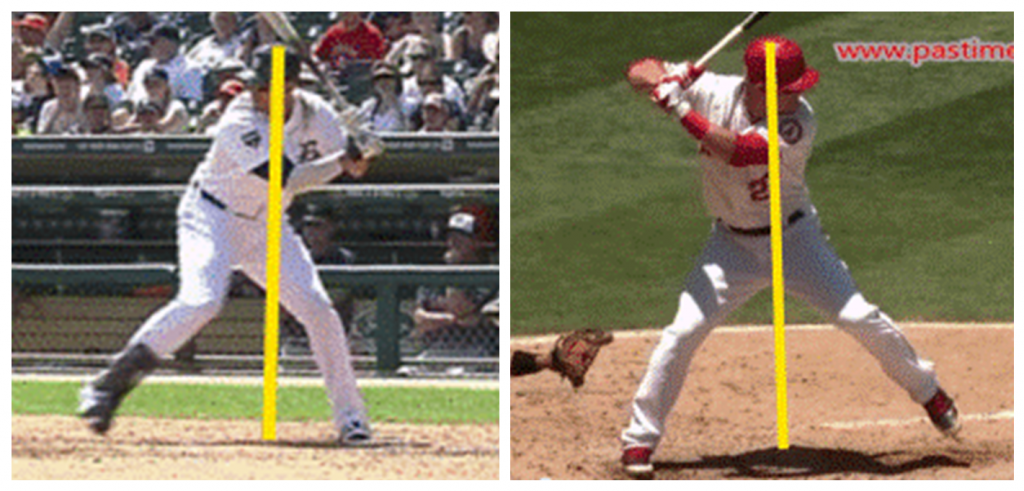
The hitter’s ability to maintain center of mass will allow him to control weight shift through the stride phase of the swing and keep the upper body in an optimal position to rotate on plane with the pitch. Too much weight shift, either towards or away from the pitcher will make it difficult for the player to efficiently transition into rotation and transfer energy through the baseball.
5. Stride Phase: Lack of Linear Momentum
Lack of linear momentum means the hitter is collapsing on the backside or simply spinning around the back hip as opposed to properly shifting his weight to the front side. This can negatively affect optimizing the linear move while compromising ground forces into foot strike this once again can cause a lack of energy transfer up the chain, ultimately costing the hitter valuable bat speed and batted ball velocities.
6. Stride Phase: Lack of Independent Hands
The hitter’s ability to create independent hands during the positive move forward will allow him to maximize separation as well as give the hitter more time to make better decisions and create better adjustability.
This is achieved by moving the hands farther away from the pitcher as the body moves closer to the pitcher. Creating this stretch will also allow the hitter to sequence more efficiently and generate optimal power up the chain.
7. Stride Phase: High Elbow
An appropriate scap load is critical for the hitter, as this allows the upper body to resist when the lower body fires, creating more separation and torque in the swing. Many times, hitters with a lack of scapular control will substitute a scap load with a high elbow, which can cause the hitter to “push” the upper extremities or to collapse the back elbow, costing him valuable time in the swing as well as reducing bat speed and swing efficiency.
8. Stride Phase: Losing the Barrel
When the athlete loses the barrel, the line of pull between the bat and the front arm is compromised. This reduces the amount “whip” and / or acceleration of the bat, costing the athlete valuable bat speed and batted ball velocity. If you’d like to know how to spot this, pause the video at toe touch. If the hitter’s top hand is outside the bottom hand (closer to the catcher), this represents losing the barrel.
9. Stride Phase: Stride Length
There are all types of theories on what the correct stride length is. My opinion is that it depends on a few things:
-
- Strength
- Mobility
- Power
Too long – While more mature athletes generally are strong enough to utilize the many benefits of a long stride, most younger athletes who do not possess this required strength and/or power, will drop their center of mass too low, making it hard for them to get out of such a low position and negatively affect angular velocities. Mobility issues combined with a long stride can also delay the beginning of rotation at foot strike causing everything to happen all at once (see “one-piece swing” below), which gives us lower rotational numbers and peak velocities into the trunk, arm and ultimately the hand / bat.
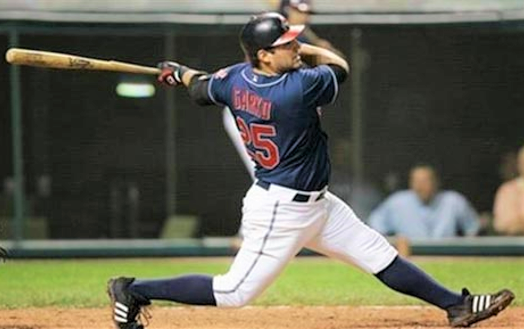
Too Short – On the other hand, too short of a stride can compromise forward momentum into foot strike, causing the hitter to “hang back” and/or contribute to less-than-optimal ground reaction forces up and into the sequence.

(Short Stride / Hanging Back)
10. Stride Phase: Lack of Lower Half Stability
Efficient lower half stability will allow the hitter to store and carry energy through the stride phase of the swing and into rotation. Without good lower half stability, the hitter will lose connection with the ground, sacrifice rotational torque, or be unable to block against the front side. This can reduce the amount of force he is able to generate from the ground up and through the swing. It will also negatively affect adjustability to off-speed pitches. The two main players in regard to creating great lower half stability are:
Front Foot Strike Timing – The ball of the front foot should hit the ground when the ball is approx. 30 ft. (halfway) to the hitter.
Too Open or Closed – While the position of the foot can and should be adjusted according to hip mobility, there are limits to how “open or closed” we want the front foot to be. Landing with the front foot too far open can cause a “soft/heel first” or “collapsed” front side when blocking begins. By the same token, landing with the front foot too closed can severely limit rotation and rob the athlete of much needed hip/shoulder separation and thus power/torque.
Once again, hip mobility will factor in to how open or closed the front foot/leg should be. K-Vest can provide us with some great information on rotation as well as poor accel / decel rates in this regard
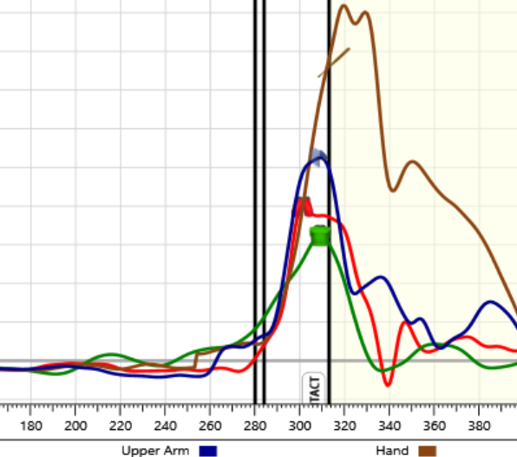
(K-Motion Example – Poor Pelvic Deceleration)
Baseball Swing Mechanics – Swing Phase (rotational)
1. Stride Phase: Front Knee Angle – Proper front knee angle indicates that the hitter has maintained balance into toe touch, allowing the lead leg to better absorb the energy being transferred from the ground as the heel plants and the hitter begins to rotate. Front knee angle can vary from player to player, but the knee angle should not increase after heel strike.
Maintaining a slightly flexed (bent) knee at heel plant is crucial to keep the core centered and in control to adequately transition from the stride (linear) phase to the swing (rotational) phase efficiently. This can help ensure a quicker, cleaner transfer of energy to the upper half through the lead leg blocking.
An overly flexed or “collapsed” knee at landing will cause the hitter to hit through his front side, creating an unstable base of support and compromising core stability/positioning, power transfer and vision to the ball.
However, an extended or “locked-out” front knee / leg usually through early hip rotation, will transfer force pre-maturely prohibiting the efficient use of optimal ground reaction forces up the chain creating losses in rotational acceleration and power. Mike Trout (below) does a great job of maintaining a great athletic stance/stable base to rotate from.
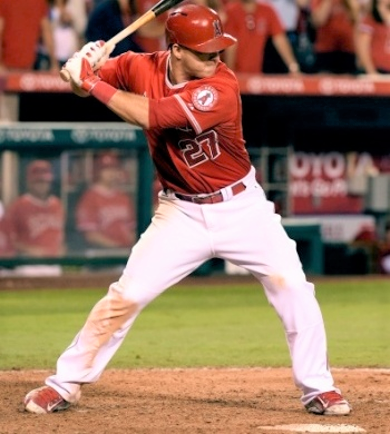
2. Swing Phase: Inefficient Lead Leg Block
A hitter that has an inefficient lead leg block will not be able to efficiently transition ground reaction forces from the linear phase of the swing into rotation. This can compromise proper sequencing from the lower body into the upper body, thereby reducing power potential being distributed efficiently through the core and into the hands and ultimately the bat.
A front leg / front side that does not firm up immediately at heel plant will continue to “drift” or slide towards the pitcher. Different players have different degrees of knee flexion and that’s ok, as long as they decrease that flexion after heel plant… and do it quickly! If not, this can negatively affect a player’s front side stability and ultimately affect lower half angular velocities transferred up the chain as well.
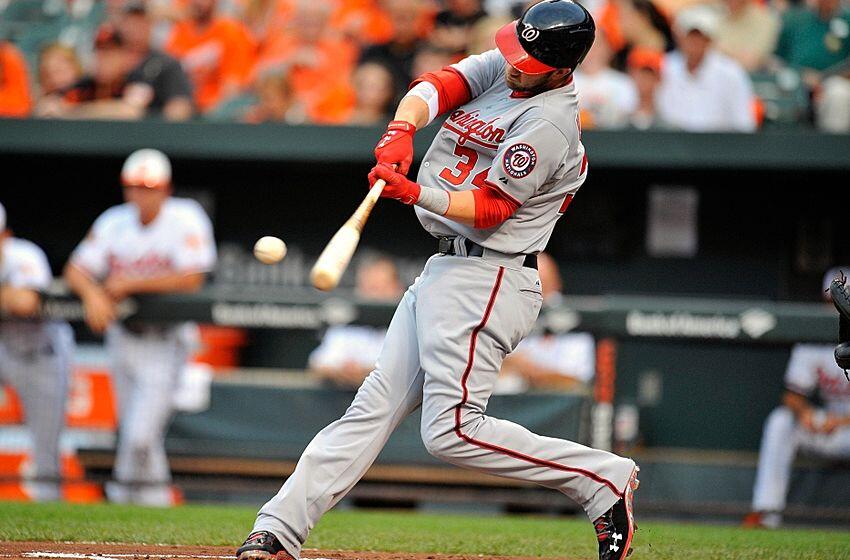
3. Swing Phase: Poor Axis of Rotation
Once the lower half has begun to transfer energy after blocking, it’s important that we have a stacked center of mass (COM) starting from the base of support (equal distance between the feet) up through the center of the hips and shoulders in order to quickly achieve full rotation. This is the “driveshaft” of the rotational phase. Optimum rotation takes place on a vertical axis and the more efficient our rotation is the quicker the bat will enter the hitting zone
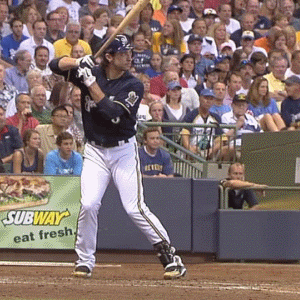
4. Swing Phase: One-Piece Swing
The point between somewhere between foot strike and heel plant is when the upper half (shoulder line) and the lower half (hips) reaches its peak disassociation, and our rope (core) is tightened. This creates the torque necessary to unwind from as the swing begins its rotational phase.
A one-piece swing is a sequence where two components of the swing are moving at the same time. For example, the torso and lead arm moving simultaneously, however, any adjacent body part peaking at or close to the same time would be considered a gate swing (pelvis / torso or torso / lead arm).
An important point to make here is that all athletes have different lengths of rope depending upon body type (limb length) and the type of mover they are “loose” (laxity) or “tight” so, what is an optimal amount of separation for one athlete may be too much for another. This can contribute to different problems further up the chain such as early trunk rotation or even worse, common hitting injuries such as oblique strains.
K-Vest does a great job of calculating separation at Heel Strike, First Move and Contact and placing it into a well-written report. We just have to keep in mind what type of mover we are dealing with, loose or tight and use good judgement.

(X-Factor Stretch Report / Performance Graph)
5. Swing Phase: Push
A push occurs when the hitter pushes the knob towards the zone with the rear arm as opposed to getting the back elbow connected and whipping the bat through the zone with both hands. This can be viewed on video by the hands getting in “front” of the back elbow at the first forward move. This pushing movement can cause the hitter to lose the ability to get on plane with the pitch, drastically reduce bat speed as well as valuable time needed deep in the zone in order to make better decisions.
There you go… 15 steps on how we analyze baseball hitting and baseball swing mechanics, from initial move through contact.
See ya’ in the gym…
By Nunzio Signore (BA, CSCS, CPT, NASM, FMS)
If you’d like to be added to our email list, please enter your information below!


